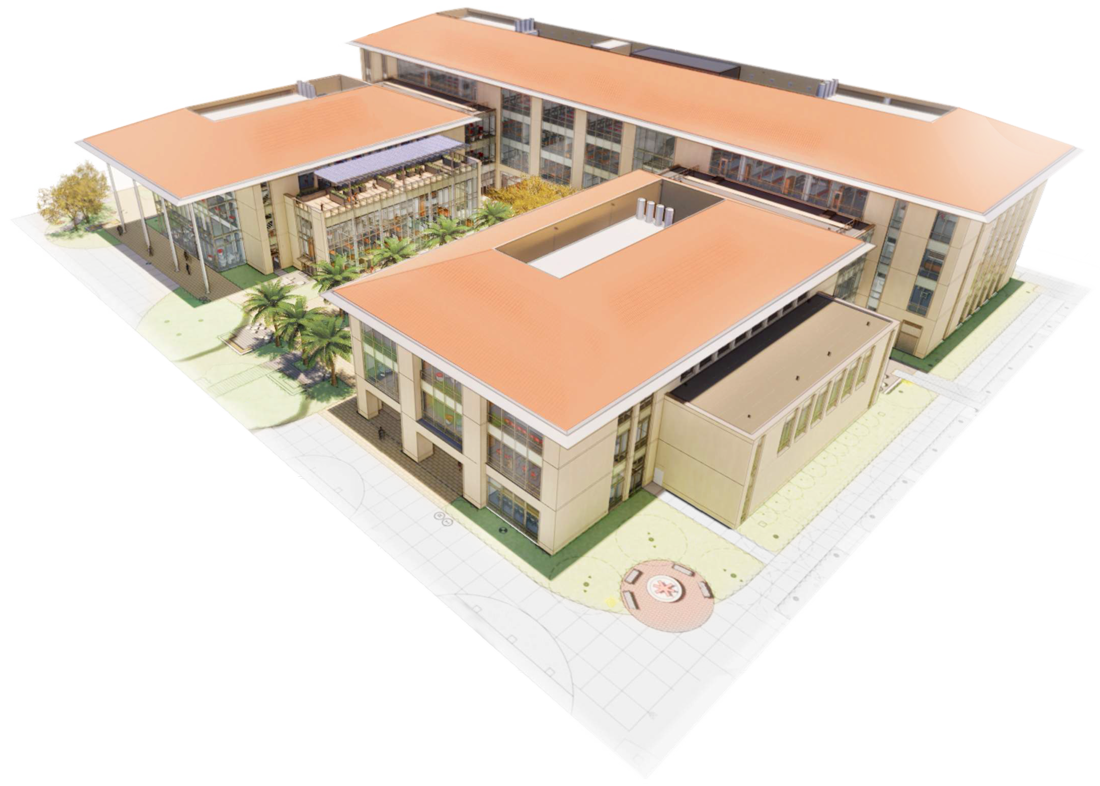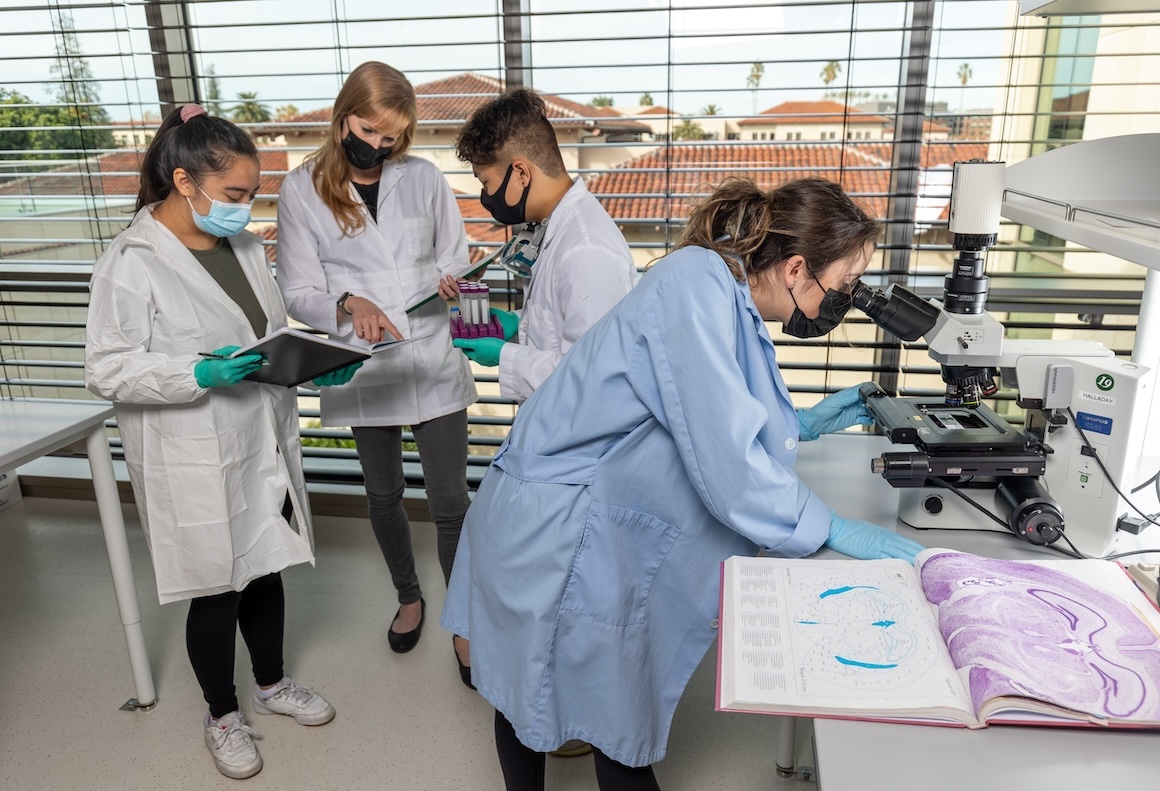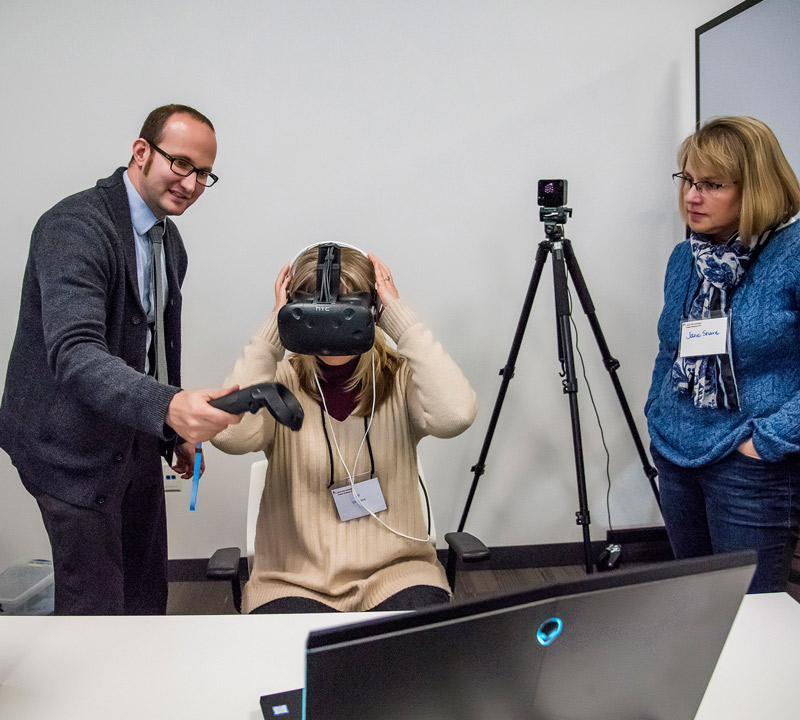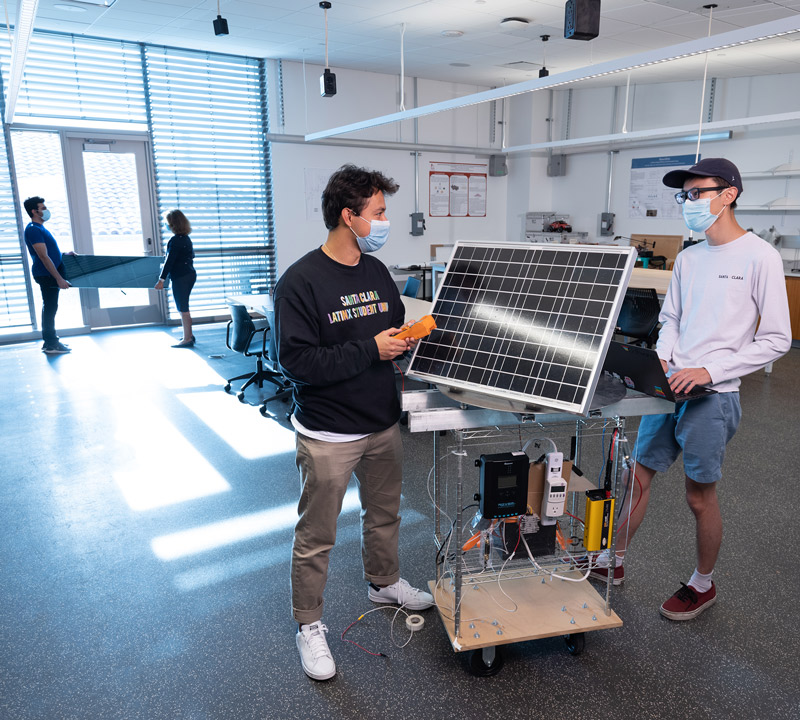Innovation doesn’t happen by accident. SCDI is designed to bring together experts from the College of Arts and Sciences, School of Engineering, and Miller Center for Global Impact to solve the world’s most complex problems.

In the Neighborhood
Complementary departments from different disciplines are strategically placed next to each other in collaborative neighborhoods in SCDI, sparking new paths of research.
- Environmental Science (CAS) + Civil, Environmental and Sustainable Engineering (SOE)
- Biology (CAS) + Bioengineering (SOE)
- Math & Computer Science (CAS) and Computer Science & Engineering (SOE)
- Physics (CAS) + Mechanical Engineering (SOE)

Touchdown spaces and common areas like the Innovation Lounge and Diversity and Inclusion Student Center are located throughout the building, equipped with flexible furniture arrangements and large monitors that allow students to practice presentations or brainstorm on a new idea.

It’s more than a place to eat, it’s an opportunity to expand connections. Located just inside the main entrance of SCDI, the cafe is a natural meeting place for faculty and students.

Let the backdrop of the California sun be the muse for your next project. SCDI has several spacious rooftop balconies and seating in the courtyard for studying.

Opportunities for spontaneous interaction are built into SCDI, with an array of informal work and collaboration areas.
Different Perspectives, New Ideas
Neural Circuits, Systems, & Behavior Lab
Undergraduate students examine the scars that childhood stress can leave on the brain to uncover how early trauma can detrimentally, and permanently, alter behavior. This research assists Lindsay Halladay, assistant professor of psychology and neuroscience, and is powered by major grants from the National Institutes of Mental Health and the Brain and Behavior Research Foundation.
Imaginarium and WAVE Lab
High-performance computing allows Assistant Professor Michelle McCully to run complex simulations and produce visualizations that examine how proteins used in life-saving vaccines react to variables like temperature. We asked: what happens if McCully worked alongside a visualization expert in computer science or a philosophy professor creating VR simulations based on thought experiments? By co-locating the WAVE high-performance computing lab and Imaginarium virtual reality lab, faculty members from biology to engineering to the humanities share new approaches that can change the trajectory of their research. “It’s easy to just keep doing what you know works, but you’re missing the opportunity to try something that could work better,” McCully says.
Latimer Energy Lab
Students in the Latimer Energy Lab are problem solvers. Using the latest technology, they can monitor Santa Clara University’s energy use nearly in real-time, analyzing data to identify problems and propose solutions to make our campus more energy efficient. The addition of a real-time test simulator also lets students test ideas and solutions. Complete with rooftop access, this "living lab" prepares students from engineering, mathematics, physics, computer science, environmental studies, and other majors to build and test their own nanogrids, microgrids, and explore new integration of renewable energies to the power grid.

Labs and project spaces are assigned to types of research rather than departments or programs. Everyone works together and learns from each other.

“I want students to feel empowered to make the building theirs. This is a Jesuit university. We strive to engage in experiential, active, service learning. The world has some problems. We give students the skills and mentorship in the labs so they can tackle these problems.”


